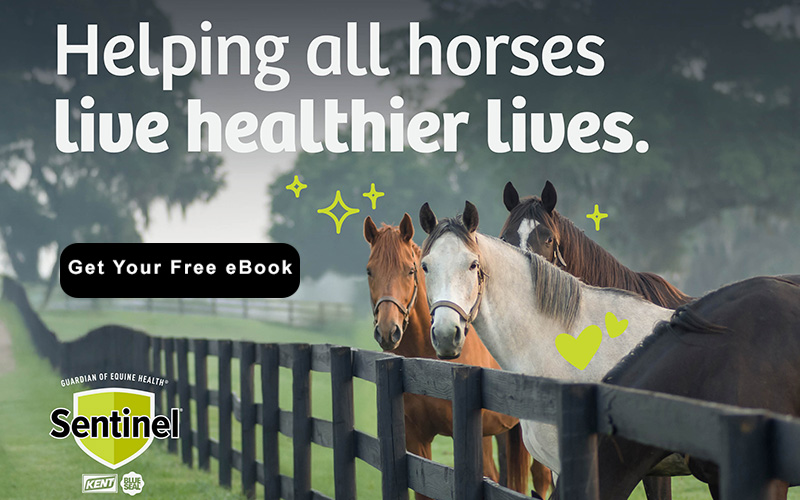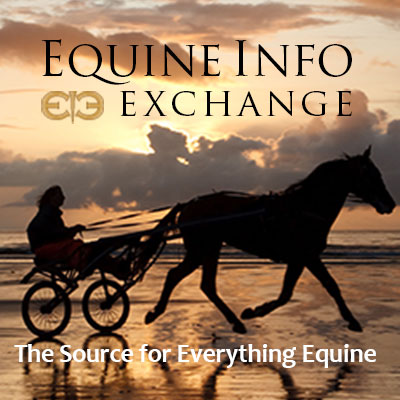Health & Education
We all want the best care possible for our horses. The Heath & Education section covers both Learning Institutions, Organizations as well as many sources for equine assistance including Veterinarians and Farriers.
For those who want a to formally study horses, the Education section includes College Riding, Equine Studies, and Veterinary Schools. Learn about the wide variety of horses in the Horse Breeds section. Supplements and Treatments Therapy are also included in the section.
Everyone can learn from Fine Art and there are some specialty Museums that might surprise you.
Horses as a therapy partner enrich the lives of the disabled. These facilities are listed in our Therapeutic Riding section. To help children and young adults build confidence and grow emotionally, please see the resources available on the Youth Outreach page.
Looking for a place to keep your horse? You can find it in the Horse Boarding section. Traveling? Find a Shipping company or Horse Sitting service if your horse is staying home!
Want to stay up to date with the latest training clinics or professional conferences? Take a look at our Calendar of Events for Health & Education for the dates and locations of upcoming events.
Do we need to add more? Please use the useful feedback link and let us know!
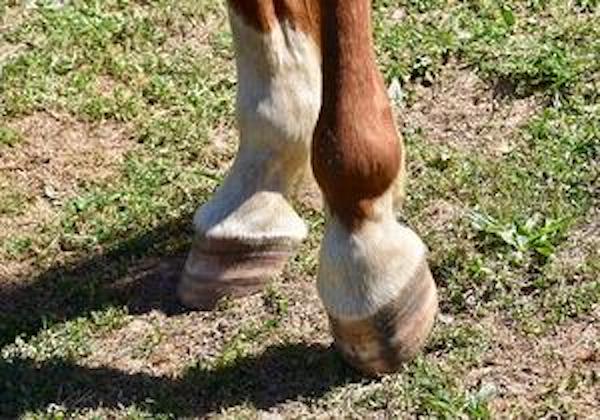
by ECIR Group Inc.
Hyperinsulinemia associated with pituitary pars intermedia dysfunction (PPID) and/or equine metabolic syndrome (EMS) is well documented to put horses at high risk of laminitis. While dietary control of simple sugars and starch is the most effective therapy to control hyperinsulinemia, some horses fail to respond.
Since the publication of articles in 2018 and 2019 describing the effects of the SGLT2 (sodium glucose cotransporter 2) inhibitor velagliflozin in controlling insulin levels in horses with hyperinsulinemia, the Equine Cushing’s and Insulin Resistance Group (ECIR Group) has been interested in exploring this family of drugs in horses that do not respond to the usual measures of diet/carbohydrate control, pergolide if the horse has PPID/Cushing’s, and metformin.
ECIR Group members with horses that had unresponsive high insulin levels and laminitis, in conjunction with their treating veterinarians, trialed them on canagliflozin. Because velagliflozin is not commercially available, members used the flagship SGLT2 inhibitor, canagliflozin, with estimated appropriate dosages based on published information.
Read more: Published: Canagliflozin for Control of Refractory Equine Hyperinsulinemia and Laminitis

By Sean Patrick
Helping Your Horse Overcome His Fears
Horses usually take the path of least resistance and conserve their energy…a nice way of saying that they are inherently lazy. So why does a young horse surge in speed under saddle when a slower pace would take less effort? The answer can be explained by examining the horse’s fear level. He needs to build confidence through experience and habituation. Building your horse’s confidence is not just about desensitizing him to a saddle pad; it is an ongoing process every time you handle him or get in the saddle.
Expect your horse to be fearful of new experiences. Your job is to assist him in overcoming his fear. Here is a list of measures you can take:
- Use your hands and legs wisely. Your horse must completely trust your actions and intentions. Communicate through physical touch that is fair and pleasing.
- Apply motivators consistently and fairly—smoothly and with warning. For example, when using a dressage whip, take your position and begin hind-end tapping slowly with increasing firmness. Never startle your horse with an unexpected firm tap. With fair application he’ll learn to respond without ever showing signs of fear.
- Be reasonable and consistent with reprimands. Your horse needs to know where the line is, and that the line is stationary.
- Spend ample time in the saddle on a regular basis. This keeps your horse prepared and accustomed to his job as a riding horse. When your riding time is short and infrequent, he won’t progress nearly as well. You want the saddle and rider to be a normal part of his routine, where fear and discomfort are not factors.
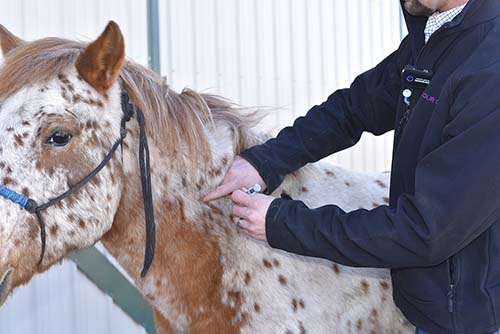
Disease symptoms, transmission and prevention, as described by an entomologist and veterinarian.
It was early in the mosquito season when a young cutting horse, who had just started training, became inflicted with West Nile virus.
“The horse didn’t know where he was placing his feet, and his gait was off. When the bloodwork came back, it ended up being West Nile,” said Tony Hawkins, DVM, Valley Vet Supply Technical Service Veterinarian. “It’s such an easy disease to prevent – as long as the horse is properly vaccinated, you don’t get any breakthrough infections.”
With about 10 weeks of treatment, the gelding survived and made a full recovery, which can be rare.
“Not many horses will recover fully. While the survival rate is high (67%), there can be some lasting side effects,” said Dr. Hawkins.
Since 1999, more than 25,000 cases of WNV encephalitis have been reported in U.S. horses, according to the American Association of Equine Practitioners (AAEP). Even more, horses represent 96.9% of all reported non-human mammalian cases of WNV disease.
With mortality rates reaching up to 90% from mosquito-transmitted diseases, it’s important that horses be protected.
Read more: Help Nix the Culex Mosquito that Transmits 3 of 5 Core Equine Diseases
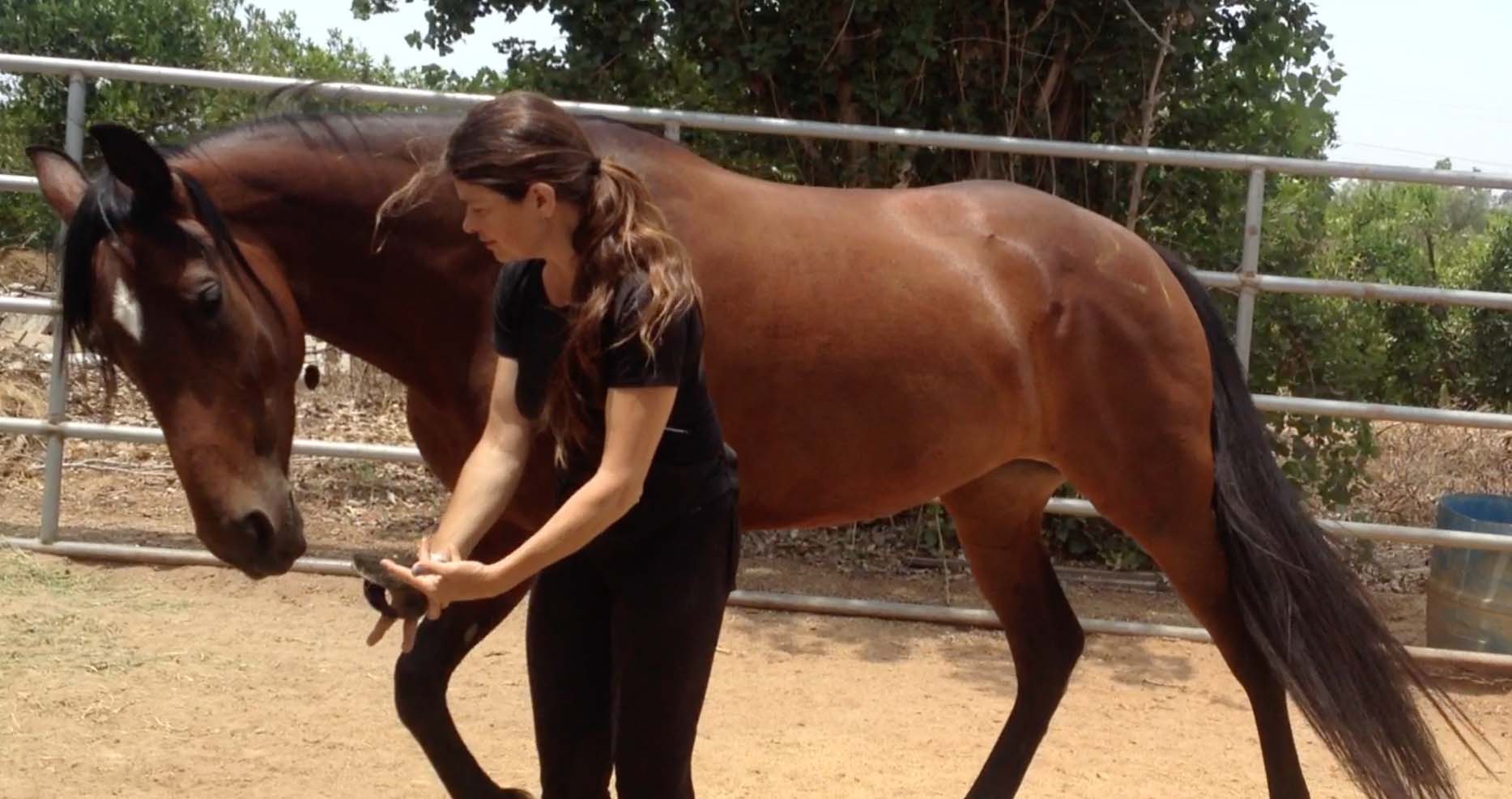
by Alessandra Deerinck
The connection between humans and horses has always been strong and universally evident ... Opposites attract. Horses do not change their surroundings, adapt to survive wherever they find food, water and other horses, and live always alert, completely immersed in the environment.
On the other side of the spectrum, man, by nature, tends to modify everything to fulfill his life needs. For example, he builds houses that allow him to live in safety, abstracting himself from the surrounding environment.
When man met the horse he tamed it, because it seemed a resource to improve life ... and so it was! Over the centuries, humans have even modified the original equine species, creating breeds that have genetic traits that can satisfy human needs and desires.
The horse has been able to adapt to survive in conditions that are extremely different from the natural ones for him, allowing man to build entire civilizations. Nowadays the original functions that the horse has had in human life are performed by mechanical means, but, once again, due to their flexible nature, horses still find a place in our life as men of the twenty-first century.

by Jackie Bellamy-Zions, Equine Guelph
The foal’s gut undergoes many changes as it develops rapidly. More and more, we are learning how the colonization of a gut correlates to good health. Exploring the differences in foal microbiomes and how those differences may tie in with overall health has PhD Candidate, Jennifer MacNicol, very excited about the potential advancements the research could yield in the field of equine neonatal care.
MacNicol, from the Department of Animal Bioscience at the Ontario Agricultural College will be working under the direction of Ontario Veterinary College researcher, Dr. Luis Arroyo, in a project planned to begin this summer studying mare/foal pairs to gain knowledge of how the horse’s gut environment matures. Research in genomics is rapidly expanding our knowledge of digestive health but is it is not well understood why diarrhea can become life-threatening in some foals while others recover without additional symptoms.

An entomologist and veterinarian discuss the unremitting mosquito.
While much of the Western half of the United States endures near historic drought levels, one might anticipate this year’s mosquito season to be a walk in the park.
No Rain, No Problem for Mosquitoes
“Just because we don’t have rain, doesn’t mean we don’t have mosquitoes,” explains Department Head for Entomology and Plant Pathology at Oklahoma State University, and former livestock entomologist, Justin Talley, PhD. “Some of the most significant West Nile virus outbreak years have been associated without significant rainfall. Be aware, just because you don’t see water, doesn’t mean there are no breeding areas around.”
Dr. Talley shared how the Culex mosquito, which is responsible for transmitting core equine diseases such as West Nile virus (WNV), can populate in the most unsuspecting places. Standing, puddling water is not needed. “One would think that wet years equal more equine West Nile virus cases; however, the type of mosquitoes transmitting these equine diseases can develop in muddy water or a storm drain. There’s a lot of water you don’t see.”
Even a tiny hole in a tree – with just a bit of water – is enough for the Culex mosquito to repopulate within.
“The thing about mosquitoes is they’re very diverse in the habitat they can modify to, and it’s their adaptive behaviors that allow them to be successful,” Dr. Talley said.
Read more: Mosquitoes Undeterred by Drought – 4 Tips to Protect Your Horse
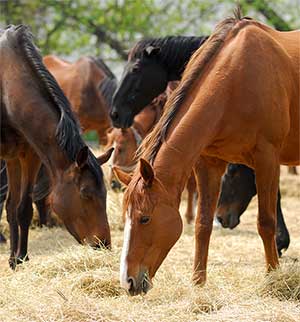
I've written about soil, sulfur and Methionine deficiency often. But everything I see says it's getting worse. - Dr. Eleanor Kellon, Staff Veterinary Specialist for Uckele Health & Nutrition
Methionine is an essential amino acid, meaning horses must get it from their diet. It is critical in protein synthesis since many proteins start with methionine and without it synthesis will stop.
Methionine is the king of the sulfur-containing amino acids which give strength to hair, hoof horn, skin and tendons/ligaments. It is the precursor for SAM-e, a mood stabilizer, and the major antioxidant glutathione.
Methionine is a methyl donor required for the synthesis of L-creatine and L-carnosine. These compounds are critical to muscle function and athletic performance.
Soybean, peas and beet pulp are poor methionine sources. Historically, grains, brans and other seed meals were adequate sources. Hays easily met the 0.2% sulfur content most authorities recommend to support production of good levels of sulfur-containing amino acids. This is changing.
I am increasingly seeing hay analyses with sulfur below 0.2%, even below 0.1%. This means soil levels are low so grains will also be affected. What’s going on?
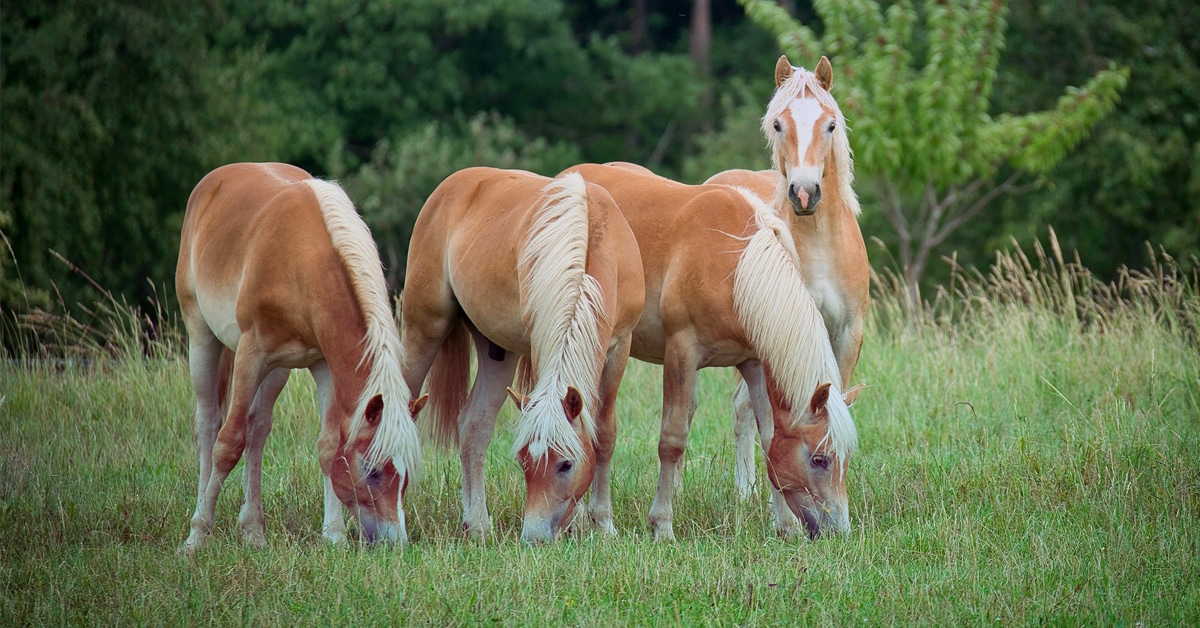
Iron deficiency anemia does not exist in adult horses. - Eleanor M. Kellon, VMD
It's common knowledge that horses with anemia and performance horses should get iron supplements to build their blood – right? Wrong!
Close to 70% of the body's active — not stored — iron is in the red blood cell pigment hemoglobin where it functions to bind oxygen from the lungs and carry it to the tissues. Iron is also the active binding element of myoglobin, the pigment that makes muscle red and acts to temporarily store oxygen in muscle and deliver it to the aerobic metabolic pathways for generation of energy. Iron is an indispensable component of hundreds of other proteins and enzymes in the body.
The body also takes advantage of iron's high reactivity to shuttle free electrons in the chain reaction that generates energy from foods in the form of adenosine triphosphate (ATP). A few antioxidant enzymes also use iron, and iron is used in body systems that detect dangerously low levels of oxygen.
However, iron's free and easy contribution in free radical reactions can have a black side. In white blood cells it is used to generate free radicals which are used to destroy invading organisms. When unchecked, that same capacity to generate free radicals can easily damage tissues.
While horses can be anemic for a variety of reasons, iron deficiency is not one of them. Except for foals raised in stalls with no access to dirt, iron deficiency anemia has never been found in a horse.
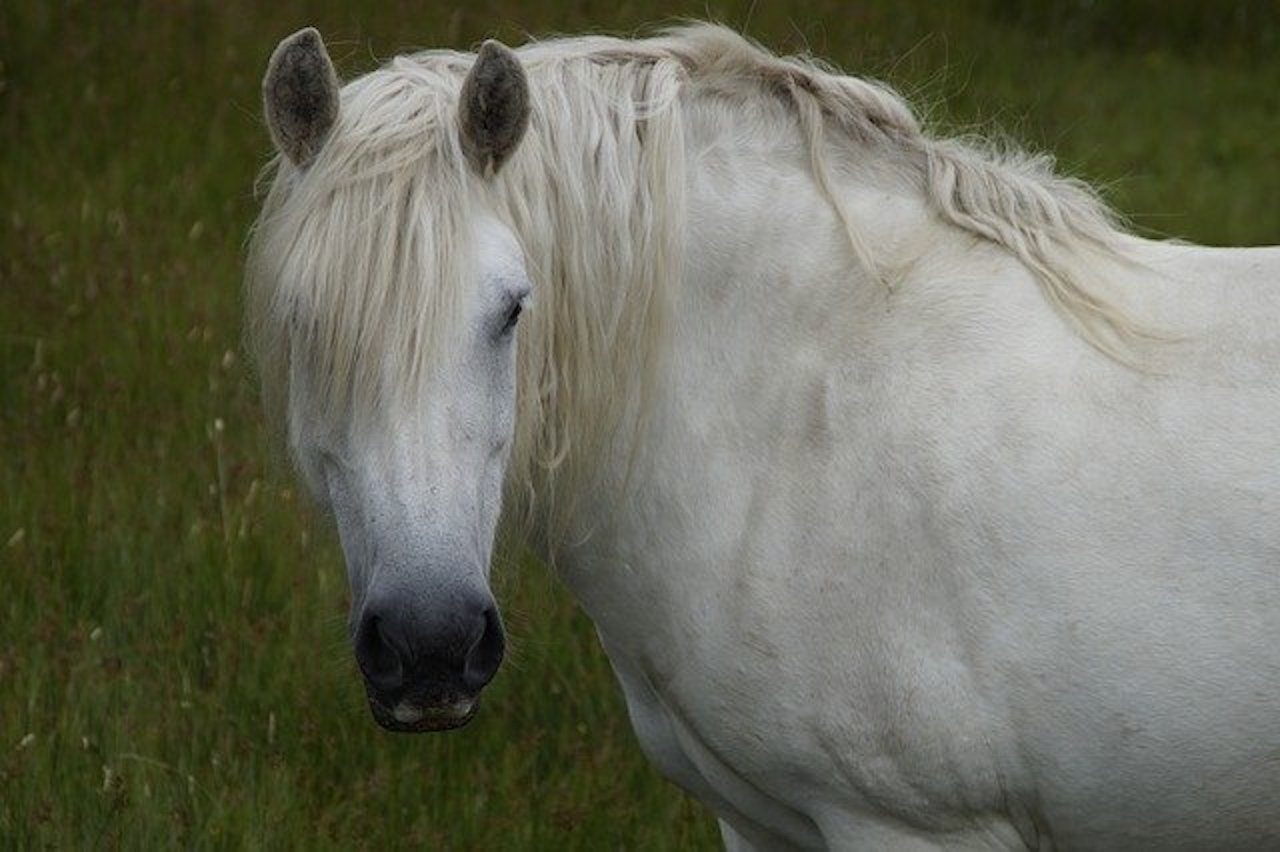
It's a common belief, however diet does not cause metabolic syndrome. - Eleanor M. Kellon, VMD
The wrong diet exacerbates equine metabolic syndrome (EMS) but it doesn't actually cause it.
It's easy to see where the idea came from. When a horse/pony/donkey has metabolic syndrome it is very important to limit the sugar and starch in the diet. Starch is digested to glucose before being absorbed. The higher the intake, the higher the animal's insulin levels will go and the higher the laminitis risk.
However, these abnormal elevations don't happen with every horse, and evidence continues to grow that metabolic syndrome is genetic.
- Welcome to London College of Animal Osteopathy (LCAO) (2:17)
- Katie Navarra Coaching - Reset: Reconnect: Reframe
- The New Foal Exam with Dr Laurie Metcalfe - Rood & Riddle Stallside Podcast
- Solving a Mare’s ‘Behavioral’ Problems
- Wintertime Equine Nutrition: 3 Facts
- The Heart of Laminitis Care
- Our First Year with Dr Peter Morresey and Dr Bart Barber
- What’s New in Equine Healthcare with Dr Peter Morresey and Dr Bart Barber
- EHV-1 Research Study and Infection Control Tips
- Hoof Care in Winter
- Caring for Barn Cats?
- Pilates for Horses—It’s a Thing
- Fix the Horse That’s Behind the Bit
- Training the Equestrian Body and Mind with Yoga
- Here Comes The Sun ~ But It’s Not Good For Everyone
- New Rotavirus Revealed with Dr Emma Adam (43:34)
- Any Horse in Regular Work is a Performance Horse
- Lose Your Fear of Selenium
- UC Davis-led Study Investigates Distribution of the Warmblood Fragile Foal Syndrome Allele in Multiple Breeds
- Veterinarians are Considering Lecithin for Treating and Preventing Ulcers






